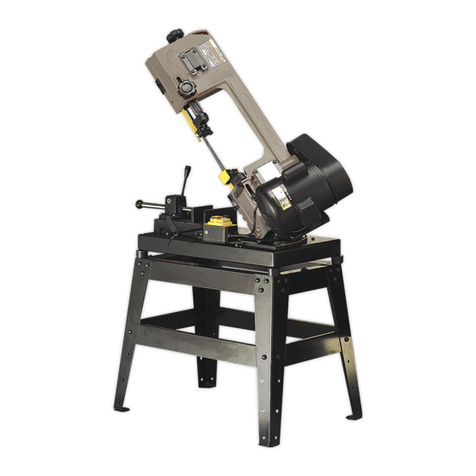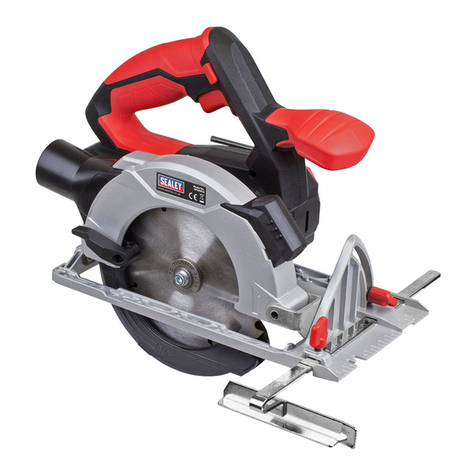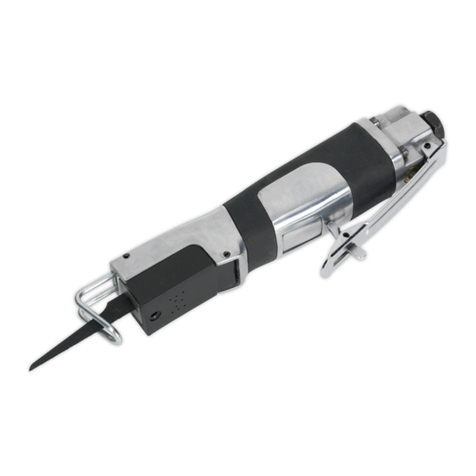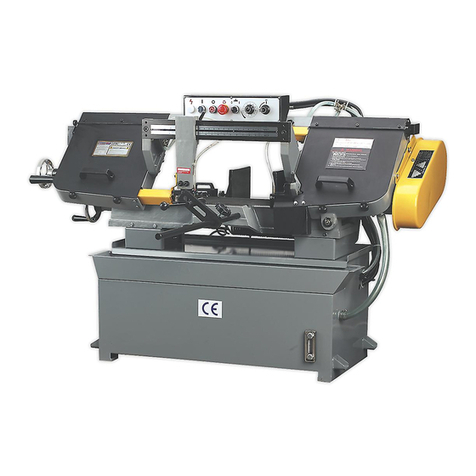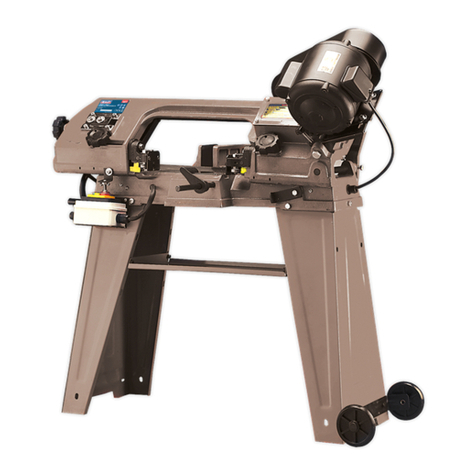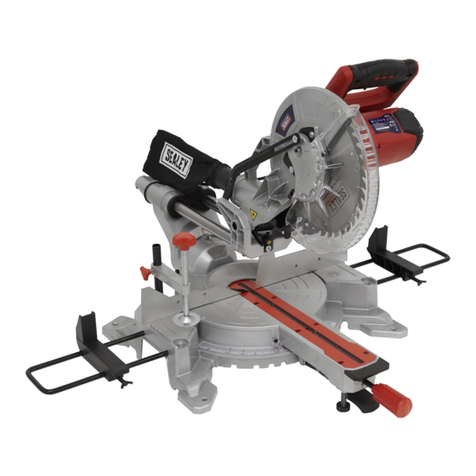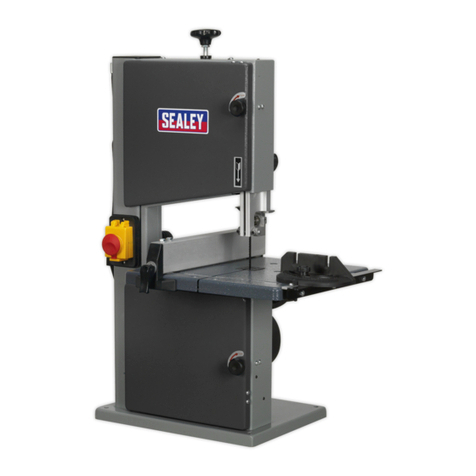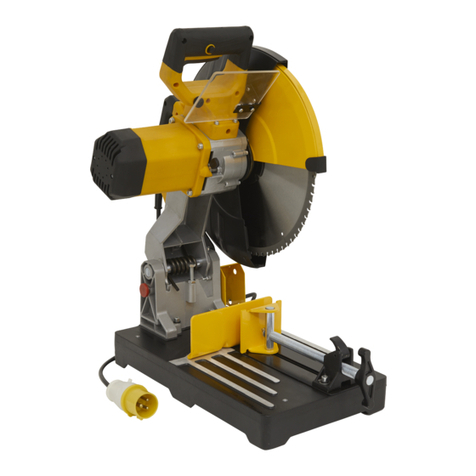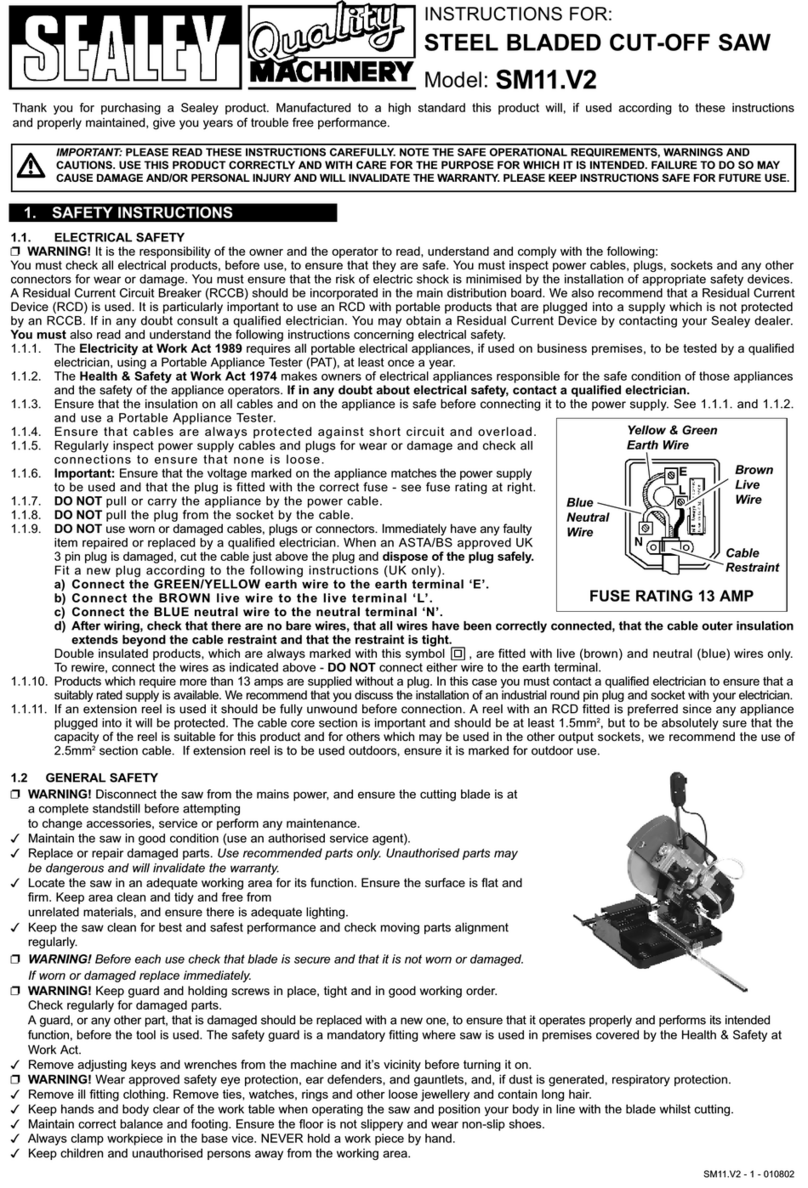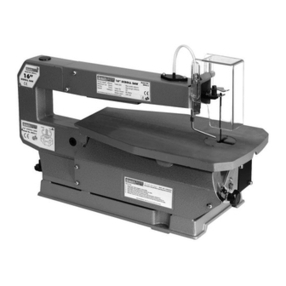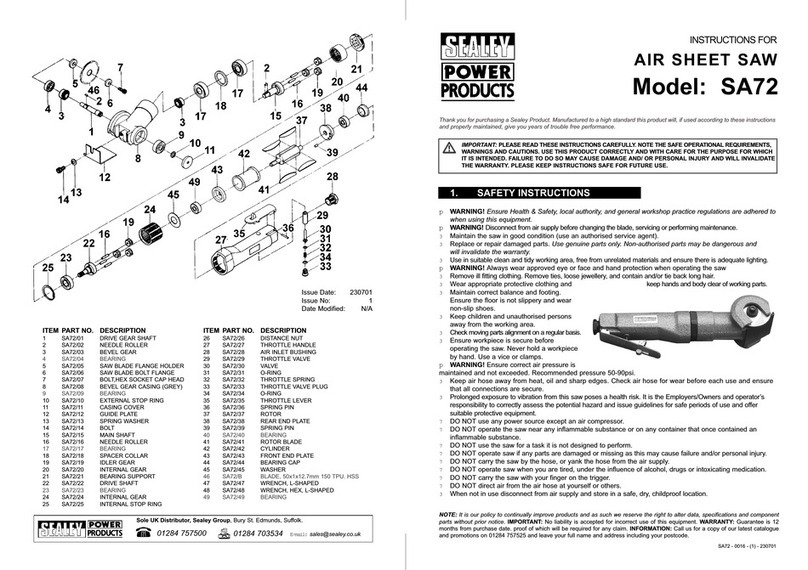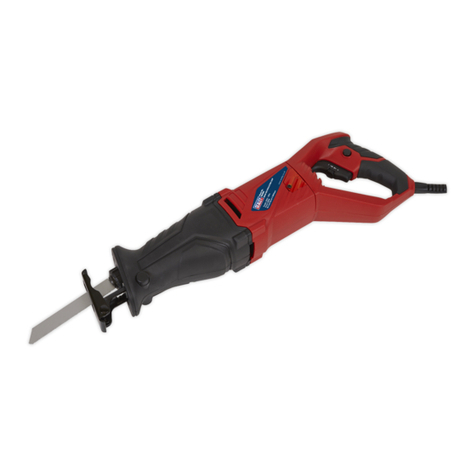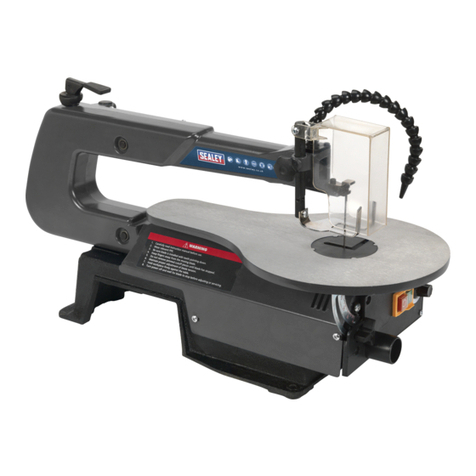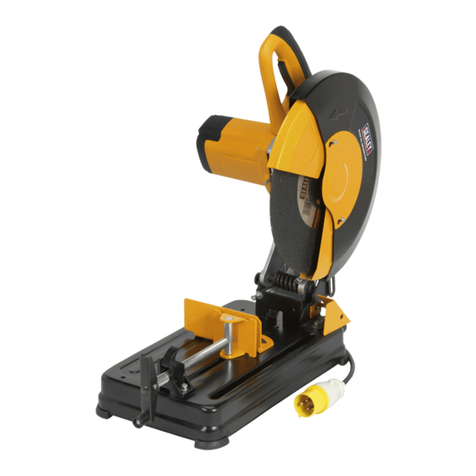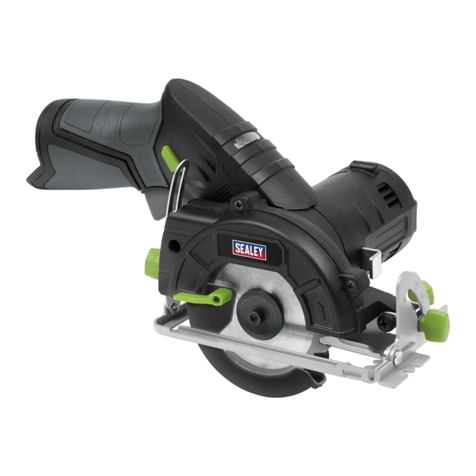
INSTRUCTIONS FOR
PROFESSIONAL BANDSAW 8”
MODEL NO: SM1303.V2
Thank you for purchasing a Sealey product. Manufactured to a high standard, this product will, if used according to these
instructions, and properly maintained, give you years of trouble free performance.
IMPORTANT: PLEASE READ THESE INSTRUCTIONS CAREFULLY. NOTE THE SAFE OPERATIONAL REQUIREMENTS, WARNINGS & CAUTIONS. USE
THE PRODUCT CORRECTLY AND WITH CARE FOR THE PURPOSE FOR WHICH IT IS INTENDED. FAILURE TO DO SO MAY CAUSE DAMAGE AND/OR
PERSONAL INJURY AND WILL INVALIDATE THE WARRANTY. KEEP THESE INSTRUCTIONS SAFE FOR FUTURE USE.
SM1303.V2 | Issue 1 20/09/16
Original Language Version
© Jack Sealey Limited
Refer to
instructions
Wear eye
protection
Wear protective
gloves
Wear ear
protection
Wear safety
footwear
Wear protective
clothing
Wear a
mask
1. SAFETY
1.1. Electrical Safety
WARNING! It is the user’s responsibility to check the following:
Check all electrical equipment and appliances to ensure that they are safe before using. Inspect power supply leads, plugs and
all electrical connections for wear and damage. Sealey recommend that an RCD (Residual Current Device) is used with all
electrical products. You may obtain an RCD by contacting your local Sealey dealer. If used in the course of business duties, it must
be maintained in a safe condition and routinely PAT (Portable Appliance Test) tested.
Electrical safety information, it is important that the following information is read and understood.
9Ensure that the insulation on all cables and on the appliance is safe before connecting it to the power supply.
9regularly inspect power supply cables and plugs for wear or damage and check all connections to ensure that they are secure.
9Ensure that the voltage rating on the appliance suits the power supply to be used and that the plug is tted with the correct fuse
- see fuse rating in these instructions.
8DO NOT pull or carry the appliance by the power cable.
8DO NOT pull the plug from the socket by the cable.
8DO NOT use worn or damaged cables, plugs or connectors. Ensure that any faulty item is repaired or
replaced immediately by a qualied electrician.
9 This product is tted with a BS1363/A 13 Amp 3 pin plug.
If the cable or plug is damaged during use, switch the electricity supply and remove from use.
Ensure that repairs are carried out by a qualied electrician.
Replace a damaged plug with a BS1363/A 13 Amp 3 pin plug. If in doubt contact a qualied electrician.
a) Connect the GREEN/YELLOW earth wire to the earth terminal ‘E’.
b) Connect the BROWN live wire to the live terminal ‘L’.
c) Connect the BLUE neutral wire to the neutral terminal ‘N’.
Ensure that the cable outer sheath extends inside the cable restraint and that the restraint is tight.
Sealey recommend that repairs are carried out by a qualied electrician.
1.2. General Safety
WARNING! Disconnect the saw from the mains power before changing saw blades and accessories,
servicing or performing maintenance.
9Mount the saw to a secure surface such as a workbench.
9Keep area clean and tidy and free from unrelated materials and ensure there is adequate lighting.
9Maintain the saw in good condition (use authorised service agent only).
9Replace or repair damaged parts. Use recommended parts only. Unauthorised parts may be dangerous and will invalidate the
warranty.
9Keep the machine clean and the blade sharp for best and safest performance. Check moving parts alignment regularly.
9 Before each use check saw blade condition. If worn or damaged replace immediately.
9Place the blade guide to within 3mm of the material being cut.
WARNING! Keep all safety guards and holding screws in place, tight and in good working order. Check regularly for damaged parts.
A guard or any other part that is damaged should be repaired or replaced before the saw is next used. The safety guard is a
mandatory fitting.
9Remove adjusting keys and wrenches from the saw before turning it on.
9Wear approved safety eye protection, ear defenders, safety gloves and, if dust is generated, respiratory protection.
9Remove ill fitting clothing. Remove ties, watches, rings, and other loose jewellery, and contain long hair.
9Maintain correct balance and footing. Ensure the floor is not slippery and wear non-slip shoes.
9Keep children and unauthorised persons away from the working area.
9Secure unstable work piece with a clamp, vice or other adequate holding device.
9Avoid unintentional starting.
9Keep hands and fingers at a safe distance from the saw blade, especially at the end of a cut. Guide the work with a piece of
wood or push rod rather than your fingers when cutting small pieces.
9Disconnect the saw from the power supply before removing wood chips or dust.
9Use a workpiece support when sawing material which extends beyond the saw table.
8DO NOT operate the machine if damaged.
Recommended fuse rating
5 Amp
